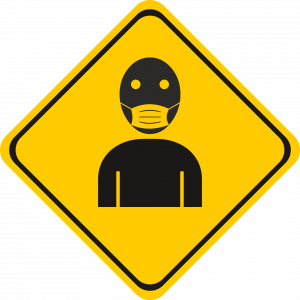
By Brian Simboli
News articles now appear that concern how higher education faculty have used coronavirus as a topic in teaching and student projects. Lehigh’s library guide about coronavirus resources collects examples of these articles.
The range of possible curricular uses of pandemic related topics are endless. Aside from obvious scientific and medical dimensions, there is a rich field of topics involving economic impacts as well as historical comparisons to earlier pandemics.
We are all getting super-saturated with pandemic-related medical and economic news as well as the constraints it places on everyday life. Why further deal with this subject, this time in the classroom?
Real-time curricular focus on the pandemic can cultivate objectivity and intellectually critical viewpoints useful in dealing with future events of this magnitude. Doing so can also provide students with perspectives that will equip them to deal with comparably urgent challenges that arise in the future. Students who do projects or theses related to the current crisis can mention them in resumes.
In these times of quarantine, Lehigh’s librarians can help identify online resources relevant to the study of the coronavirus. The library guide mentioned above includes resources (including data-related ones) and library subject guides are also available. Faculty interested in how historical epidemics played out at Lehigh and locally can contact Special Collections staff.
In addition to the usual bibliographic and full text library resources, resources that provide data are Statista, Data-Planet Statistical Datasets and Statistical Ready Reference and (for mapping) Social Explorer. The Brown and White university newspaper archive includes coverage of the Spanish flu pandemic.
How are Lehigh faculty introducing coronavirus related topics into the curriculum? The following samples can inspire faculty who want to incorporate the topic of coronavirus in their teaching.
Prof. Joan Ramage, Earth and Environmental Sciences mentioned that her spring class Geographic Analysis explored how geographic information systems and satellite observations revealed air pollution dropping during the Covid-19 outbreak. This was a result of individuals remaining at home. She also indicated that GIS was also used to show the distribution and interconnections of the disease, disease impacts, and disease vulnerability. It was a teaching opportunity for students exploring data analysis and environmental science.
Prof. Hyunok Choi of the College of Health said she will use “COVID-19 as a real-life learning tool this fall. Using vignettes, students will examine relationships between environmental pollution and population susceptibility to the virus at the molecular-, cellular, individual-, and community-level. Students will then develop a remediation plan.” Also in COH, Prof. Fathima Wakeel mentioned that “I am leading a cross-college study about COVID-19 with an interdisciplinary team of Lehigh faculty.”
According to Prof. Shin-Yi Chou, Chair of Economics, “in a sports economics class this fall I will ask students to evaluate the impact of COVID19 on the industry.”
Visiting Prof. Marija Baltrusaitiene wrote an exam question for an introductory economics class that asked students to comment on the article “Supermarket in Denmark Comes Up With a Brilliant Pricing Trick to Stop Hand Sanitizer Hoarding” and was very impressed with the creative replies this elicited.
Finally, Nelson Tansu, the Daniel E. ’39 and Patricia M. Smith Endowed Chair Professor and Director of the Center for Photonics and Nanoelectronics (CPN), mentioned that he worked with the medical doctors at St. Luke’s Hospital in Bethlehem, PA for designing and building the ultraviolet sterilization system for N95 masks. He further noted that he had assembled his staff members at the CPN to create “The Bug Zapper,” and this system has enabled the coronavirus decontamination of more than 20,000 masks at the hospital during the past six weeks. This project helped give students real-world experience with great societal impacts.
Librarians are available to assist students and help faculty navigate the vast quantity of informational resources already available about the pandemic. This provides librarians, members of a service-oriented profession, their own opportunity to make its own unique contribution during these times.
[Image CC0 Public Domain Paul Brennan]